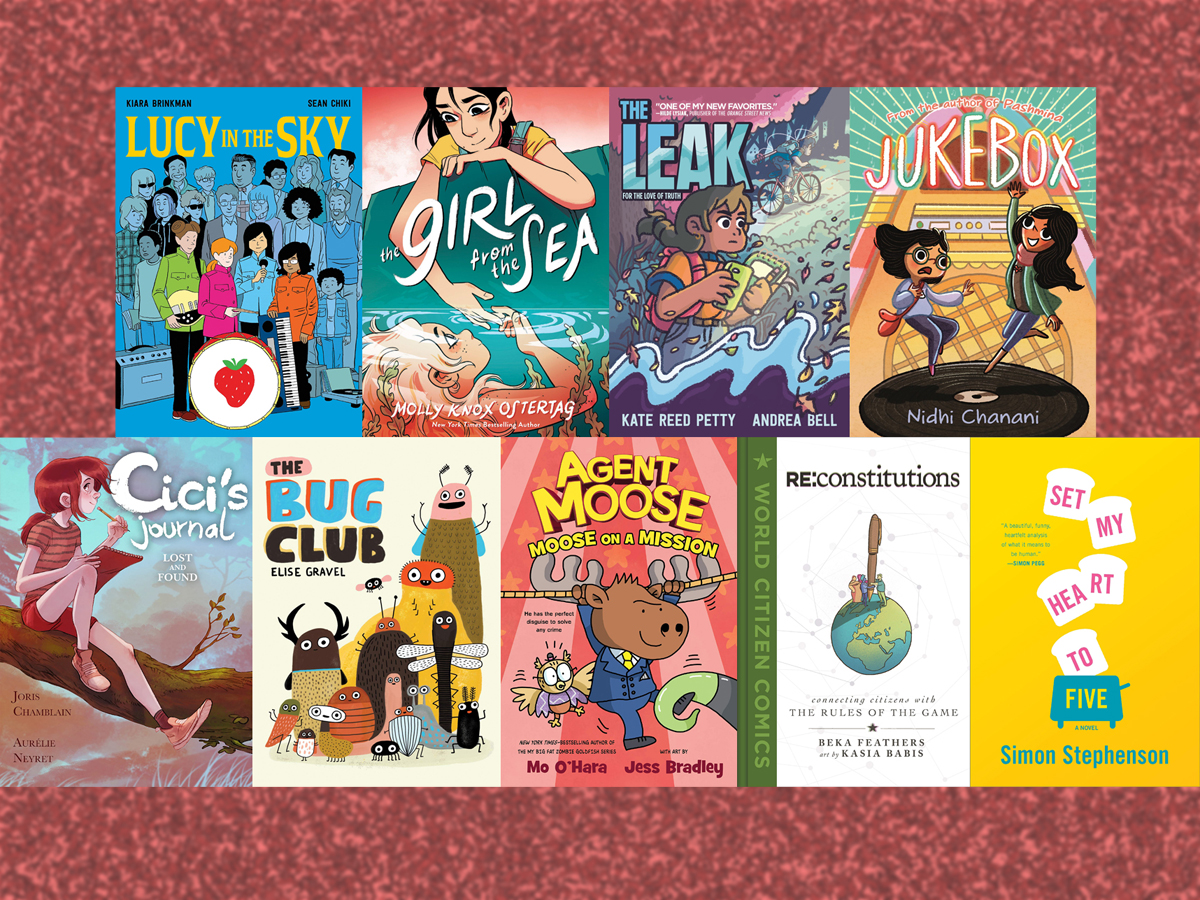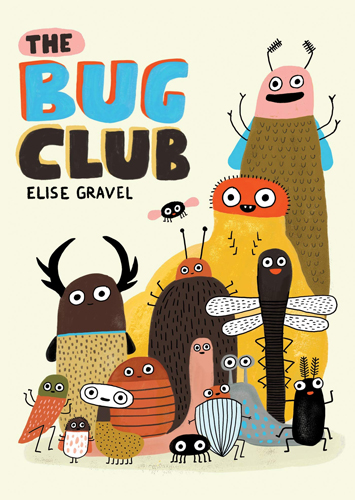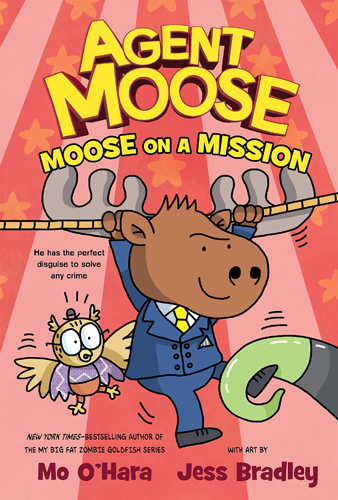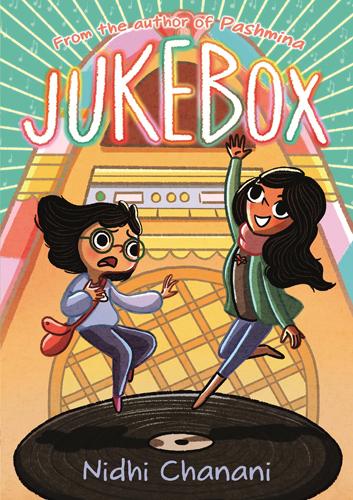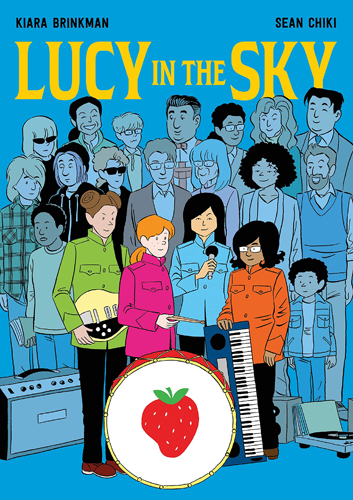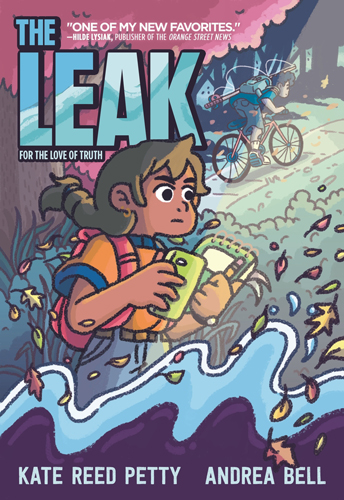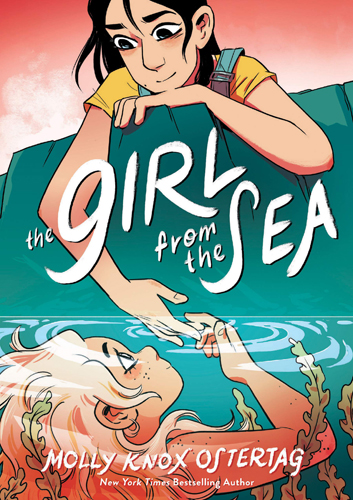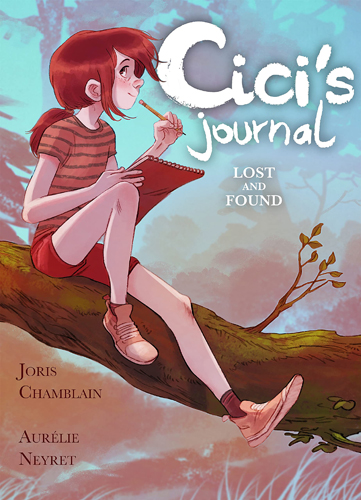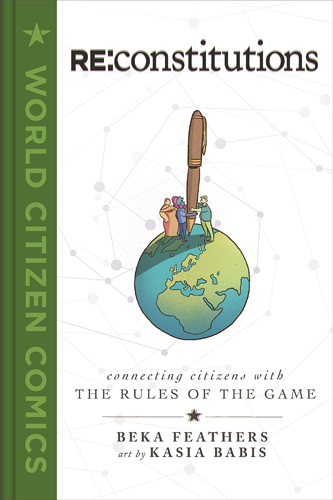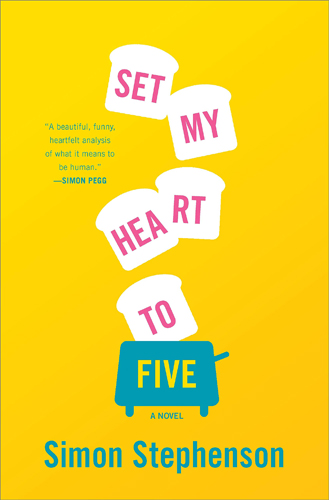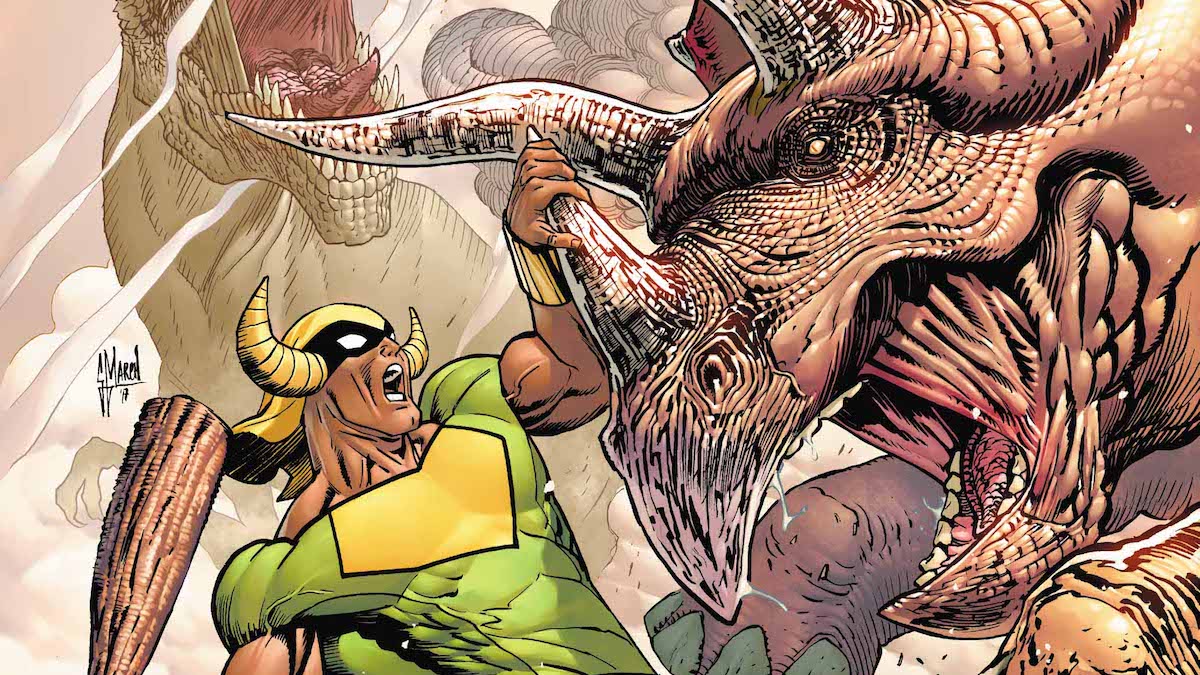It may be time for me to admit that my “weekly” column has become a monthly column. It used to be that non-fiction took me a while to read, but I could polish off a novel pretty quickly. These days, fiction takes me significantly longer to finish, and even the graphic novels are piling up. Admittedly, part of it is that I’ve been able to host game nights again (and my stacks of unplayed games are also overflowing), but part is also that the pandemic has basically taken up residence in my brain and is using a lot of background resources. At any rate, I did manage to read a few books this past month, so here we go!
The Bug Club by Elise Gravel
This book is sort of a picture book, sort of a comic, and is all about bugs. It’s not limited to insects, but includes all sorts of creepy crawlies, including spiders and tardigrades and pillbugs. Illustrated in Elise Gravel’s cute, cartoony style are fun and weird facts. For instance, did you know that the lesserblack tarantula keeps a pet frog that protects its eggs? This one pairs well with one of Gravel’s previous books, The Mushroom Fan Club.
Agent Moose: Moose on a Mission written by Mo O’Hara, illustrated by Jess Bradley
This comic for younger readers features the Agent Moose, the not-so-super spy, and his sidekick Owlfred. There’s a robber on the loose, stealing all of the forest animals’ favorite things and leaving them so scared that they won’t talk. Agent Moose is on the case—though he may be a little too fond of secret disguises. The story is pretty silly (and also features Agent Moose’s granny, the Magnificent Mooseini) and there are plenty of puns and visual gags. This is actually the second book in the series, but I missed the first one—although it’s pretty easy to follow the story anyway.
Jukebox by Nidhi Chanani
Shaheen’s dad mysteriously vanished—and when she and her cousin Tannaz go investigating, they come across a jukebox that transports them to a different time and place! What follows is a brief trip through American musical history, often tied to significant events or movements that were taking place at the time. Like Pashmina, Chanani’s previous graphic novel, Jukebox is a fantastical adventure about a girl connecting with a piece of her heritage—in this case, her dad’s love of old records. I won’t get too picky about the time travel itself since it’s explained as more magic than science, but it’s neat to see history through the lens of songs that were released across the decades, even if each episode of travel is pretty brief. (I’ll admit that I wasn’t familiar enough with all of the songs that I could hear them in my head while reading the book, though I recognize most of the artists at least. Fortunately, there’s a playlist at the end of the book in case you want to give them a listen!)
Lucy in the Sky written by Kiara Brinkman, illustrated by Sean Chiki
Here’s another music-themed graphic novel, this one (as you may have guessed from the title and cover) inspired by the Beatles. Lucy discovers her dad’s old record collection and begins to make her way through the Beatles’ discography. It becomes the soundtrack to her life as she struggles through various middle school issues: her relationship with her friends is changing and she’s not sure she’s ready for that; her grandmother is undergoing chemotherapy but Lucy doesn’t want to admit that she’s sick; her photojournalist mom is always traveling, and Lucy just wishes that her parents were still together. Lucy decides to start a band with a couple of friends, but that’s not easy, either. There are a lot of conflicts between a couple of them—they have different musical tastes and different styles. They can’t even agree on the name of the band.
There’s a lot going on in the book, and the pacing can feel a little disjointed in places, though even that feels like an accurate impression of what it’s like going through adolescence, when everything is crucial and you feel like you don’t have control over any of it. Throughout it all, Lucy falls in love with the Beatles, and mourns when she reaches their last album—even though John Lennon’s death was well before she was even born, she feels that loss in the present. Like Jukebox above, there’s a soundtrack listing at the end, though this one is significantly longer. It’s not just the Beatles, though they definitely get the lion’s share. And, as with Jukebox, although I recognize many of the song titles, I don’t know all of them enough to hear them in my head, and so I think at least a little of that magic is lost on me—I think this book would be most enjoyed by somebody who is already familiar with the Beatles, or is taking the same musical journey as Lucy while reading the book.
The Leak written by Kate Reed Petty, illustrated by Andrea Bell
Ruth wants to be a journalist. She writes the COOLsletter, an email newsletter that has all of 40-something subscribers, and fills it with various things she sees around town. When she discovers some strange black slime at the lake, she jokingly calls it evidence of aliens in her newsletter, but then she goes digging some more. Is it from the local country club? Or perhaps the car wash? Her investigation gets picked up by some blogs and goes viral, and suddenly Ruth is dealing with a lot more attention than she’s used to.
This graphic novel is dedicated to the people of Flint, Michigan, and has some obvious parallels to the real-life incident of water pollution. The kids in The Leak learn about Flint, and that inspires Ruth to keep pressing for answers, even as many of the adults in her life brush her off. It’s hard to be taken seriously when you’re young, but Ruth gets some tips on important qualities of being a journalist. This story shows how even kids can make a difference—but it also touches on the difficulty of making real change when you’re up against corporations with lawyers and publicity experts.
The Girl from the Sea by Molly Knox Ostertag
The Girl from the Sea is a spin on the legend of selkies, mythical creatures that can change between a human form and a seal form. Morgan lives on a little island in Nova Scotia, and she’s counting the days when she’ll be done with high school, when she can stop compartmentalizing her life into separate boxes. She doesn’t want anyone, especially her group of friends, to know her secret—that she likes girls—and she figures it will just be easier to be a completely new person once she moves away.
Then Keltie shows up, a strange girl who saves Morgan from drowning one night. Keltie is (as you may have guessed) a selkie, and the two become very close, though Morgan still wants to keep their relationship a secret from everyone else. As it turns out, Keltie has some secrets of her own—what is her reason for taking on human form? It’s a poignant story about identity, communication, and love, and Morgan eventually finds her own way, though the book didn’t end the way I expected it to.
Cici’s Journal: Lost and Found written by Joris Chamblain, illustrated by Aurélie Neyret
I wrote about the first volume of Cici’s Journal a few years back, and I was thrilled that First Second has published another volume translated from French. This book has three chapters to it, continuing the story of this insatiably curious girl. There are sections of comic book, and then every so often we have pages from Cici’s journal with her own illustrations.
“The Last of the Five Treasures” takes place around Christmas, and centers on Sandra, a bookbinder Cici met at a library event. Cici and her friends, Lena and Erica, visit Sandra’s workshop to learn about book repair, and they find an old chest filled with sheet music and a cryptic note referring to “the first of the five treasures.” They’re able to find the owner of the book—which not only leads to a second clue, but also awakens some of Sandra’s forgotten memories. As Cici and her friends hunt down each successive treasure, we learn more about Sandra’s past and we get some hints about some difficulties in Cici’s own past, too.
In “The Faceless Goddess,” Cici and her mother go on a vacation, to the Mansion of a Hundred Mysteries. It’s an old mansion that was once a home and workshop for artists, and was turned into a mystery-themed attraction where guests are invited to solve riddles by exploring the house. Each guest gets their own riddle, and Cici and her mom are challenged with a cryptic question about a Ringmaster and Venus. The more they explore, the more the mystery deepens—and a trip that was supposed to help Cici and her mom bond turns into a frustration. There is some resolution, but there’s a bit that remains mysterious to the reader until the next chapter.
Finally, in “From the First Snowfall to the Perseids,” we find Cici investigating … herself! She and her mom decide to use a journal to work on their relationship, since Cici finds it easier to write than to speak. They take a trip through some of Cici’s earliest memories, and we learn a bit more about her. In particular, we learn more about her father, who died when she was very young, and the effect that has had on her and her relationship with her mom.
The illustrations in Cici’s Journal are wonderfully detailed, and richly colored; they look more like something from a picture book because they don’t use the thick outlines and flat areas of color often seen in kids’ comics. The story itself also has a lot of nuance, with both adults and kids working through some very strong feelings, so it might be a little intense for younger readers, but it’s a lovely book and I really enjoyed finding out more about Cici and her friends.
Re: Constitutions: Connecting Citizens with the Rules of the Game written by Beka Feathers, illustrated by Kasia Babis
Here’s another entry in the World Citizen Comics series from First Second, a great set of comic books that teach about civics. (See these other Stack Overflow columns for Unrig, Fault Lines in the Constitution, and What Unites Us.) Re: Constitutions is about citizenship, and more specifically the role that a constitution plays in the lives of citizens. It’s not just about the United States Constitution (though the story takes place in the US), but includes stories about constitutions from several other countries as well.
The framing story is about Marcus, who has a summer assignment: an essay on what it means to be a citizen. He’s having trouble figuring that out, and ends up talking to everyone in his neighborhood. A neighbor from Kosovo tells him about not being allowed to speak or write in Albanian, and gaining that right through a new constitution following a terrible war. A Rwandan exchange student shares how the parliament changed after the genocide left a country that was 70 percent female. Marcus’ mom talks about their house, and how redlining was an obstacle for home ownership for his grandparents.
All of these are tied to constitutions and the rights granted by the constitution. Marcus learns about what sorts of things are included in a constitution, why it’s important, and how and why they can be changed. The book makes the connection between what can seem like a dry, boring document and the privileges that we enjoy—as well as the responsibility we have to speak up for our rights or fight for change when necessary.
Sand Castle written by Frederik Peeters, illustrated by Pierre Oscar Lévy
[Note: the cover for this book features a dead, nude woman floating in the water, which could be disturbing. Since our site is generally kid-safe even when we cover products for adults, I decided to omit the cover image here.]
This graphic novel for adults is the inspiration for M. Night Shyamalan’s new movie, Old. It’s about a hidden beach, surrounded by a cliff, where a few groups of strangers find themselves mysteriously trapped. Something feels a little off, but it’s not clear what. After a child discovers the body of a woman floating in the water, things get uglier. One man, there with a large family, suspects the lone young man who has been lurking in the periphery—but they can’t reach anyone on the phone. In the meantime, the four kids—ranging from 3 to 14—start aging visibly, growing up right before their parents’ horrified eyes.
It’s a bizarre, unsettling story, and it’s easy to see why Shyamalan was attracted to it. I haven’t seen the film, though the trailer looks like it adds some jump scares and more action; the book is more about the psychological effects the rapid aging has on everyone. The adults come up with theories about what’s happening, while the kids—well, they discover pretty quickly what happens when you reach puberty and the hormones kick in, among other things. Eventually everyone has to confront the idea of their own mortality. I’m curious where the movie takes it (for instance, the trailer includes a brief glimpse of a cryptogram that Mike Selinker tries to crack in this Twitter thread) but the book actually doesn’t offer a lot of explanations for what’s happening, and is more an observation of how the various people react to the situation. That may be creepier than whatever the film—jump scares and all—may have to offer.
Set My Heart to Five by Simon Stephenson
Hey, look! An actual novel. It was actually published last year, but as I said before it’s taking me longer to read things these days, so I just grab things out of my stack and hope for the best. Set My Heart to Five is narrated by Jared, a dentist in Michigan who also happens to be a bot—though the bots in this story are extremely advanced and are human in appearance. It’s their behavior that generally gives them away, since they are engineered not to have feelings, which makes them great for jobs that humans aren’t interested in doing.
Jared, however, does start to have feelings—clearly a malfunction of some sort, and he takes himself in to the Bureau of Robotics to get tested. But then, aided by a doctor neighbor, he experiments with watching movies (old nostalgic films, not the killer bot movies that are popular in the cineplexes) and starts tracking all the different new emotions that he’s experiencing. He realizes that he wants to live and feel new feelings—but that pesky robotics inspector is on his tail. Jared’s dream (after fleeing to California) is to write a screenplay that will show the world that bots can have feelings and, you know, aren’t actually murderous and terrible.
Most of the book is written from Jared’s perspective, and I have to admit I found it a bit grating. It felt comparable to the awkward way that autistic people are sometimes portrayed in fiction—somebody with no feelings (at least at first) who takes things very literally and uses catchphrases they’ve learned that regular people use but not always appropriately. Jared often speaks in short bursts with lots of exclamation points. “Humans! I cannot!” and lots of instances “Ha!” Every so often there are also sections of the book that are presented as a screenplay, with Jared providing a voiceover as a scene plays out. I’d just recently read A Psalm for the Wild-Built by Becky Chambers (about a robot trying to figure out human needs), and the last book I’d read that used a screenplay format was Interior Chinatown by Charles Yu, so those were really tough acts to follow.
Despite my irritation at the writing style, I decided to stick it out because I wanted to see where the story was going, and I’m glad I did. What’s fascinating is that Jared talks a lot about formulas, because as he watched a lot of films and studied them (with the help of that neighbor), he learns that Hollywood movies are formulaic, and that there’s a particular way to design your protagonist and set things up to make the audience feel a certain way. And—guess what—Jared’s own story is formulaic and is set up to make you feel a certain way, too. It’s a clever and meta, and it’s also pretty obnoxious that it works. By the end of the book I did care about Jared (even if I still never quite fell in love with the way he wrote).
My Current Stack
In more recent releases, I’ve just recently finished Blood Like Magic by Liselle Sambury, a story about a young Black witch who has just gotten her Calling, the trial she must pass to get her magic—more about that one next time. And I’ve started Redemptor by Jordan Ifueko, the second book in the Raybearer series (which I started earlier this year). Hopefully I can pick up my pace a little, both in reading and writing!
Disclosure: I received review copies of the books in this column. Affiliate links to Bookshop.org help support my writing and independent bookstores!
